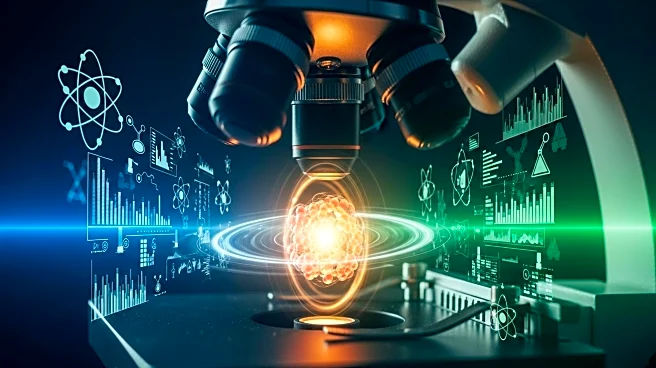What is the story about?
What's Happening?
Researchers have developed a new protocol for synthesizing transition metal-sensitized lanthanide near-infrared luminescent nanoparticles. These nanoparticles, doped with lanthanide ions such as Er3+, Tm3+, Yb3+, and Nd3+, are valuable for applications in bioimaging and information security. The introduction of transition metal ions like Cr3+, Mn2+, and Ni2+ enhances luminescence intensity. The protocol includes precise preparation of transition metal trifluoroacetate and synthesis of various nanoparticle types, offering reproducible synthesis and troubleshooting guidelines. This advancement promises broader application of these luminescent materials.
Why It's Important?
The development of transition metal-sensitized lanthanide nanoparticles is significant for advancing technologies in bioimaging and information security. These nanoparticles offer high-brightness NIR emission, which is crucial for detailed imaging and secure data transmission. The standardized synthesis protocol ensures consistent quality and performance, facilitating wider adoption in scientific and technological fields. This innovation could lead to improved diagnostic tools and enhanced security measures, impacting healthcare and information technology sectors.
What's Next?
The new protocol is expected to drive further research and development in luminescent materials. Researchers and industries may explore additional applications in medical imaging and secure communication systems. The scalability of the synthesis process could lead to commercial production, making these advanced materials more accessible for various applications. Continued refinement of the protocol and exploration of new transition metal combinations could further enhance luminescence properties.
Beyond the Headlines
The use of transition metals in enhancing luminescence properties highlights the importance of interdisciplinary research in materials science. This development underscores the potential for combining chemistry and nanotechnology to create innovative solutions for complex challenges. The ability to fine-tune luminescence properties through precise synthesis protocols may lead to breakthroughs in other areas, such as energy-efficient lighting and advanced display technologies.
AI Generated Content
Do you find this article useful?














